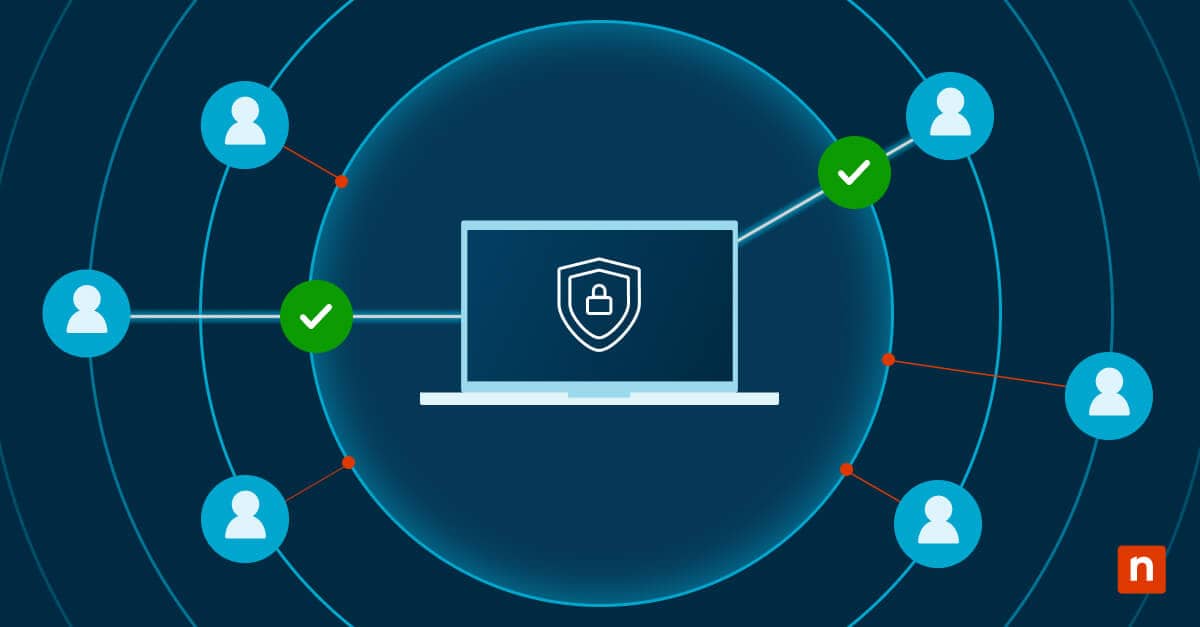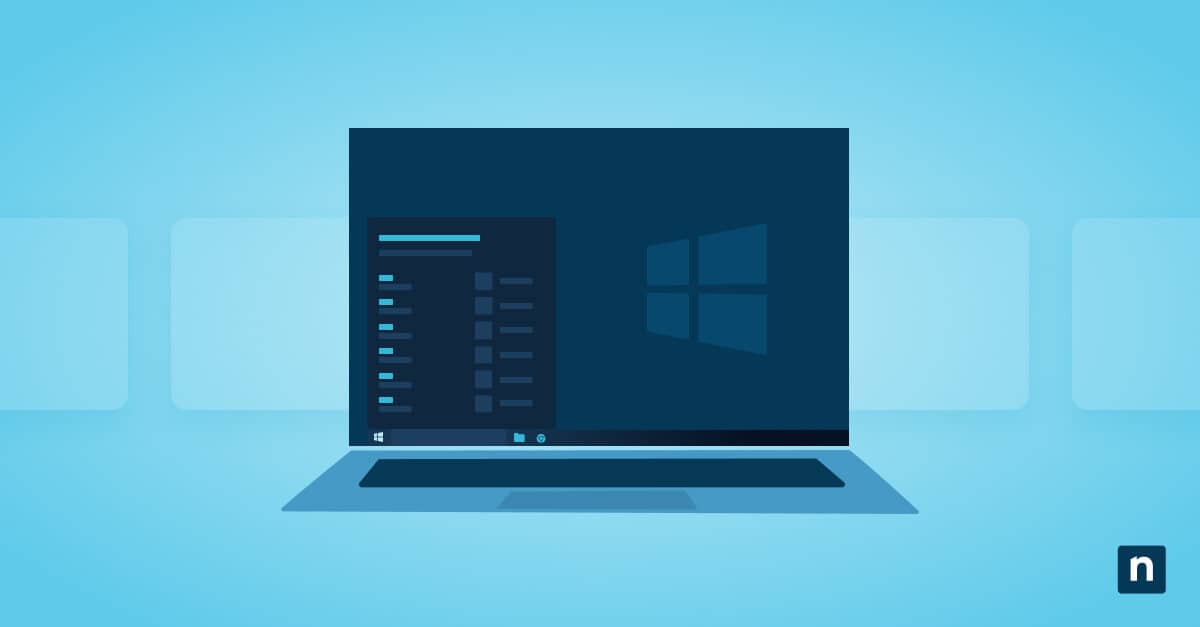Perhaps the worst IT scenario an organization can face is an unexpected and forced suspension of all its operations. The cost of downtime that’s experienced in such a situation far exceeds the damage from lost data or hits to reputation. While cyberattacks vary in intensity and approach, downtime and catastrophic loss of data come in many more forms and are equally, if not more, difficult to avoid.
That’s because there’s simply no way to guarantee that an organization will never face a disaster. It’s not just threats like ransomware that are cause for worry. Hardware failures, human error, natural disasters, and numerous other factors can all bring an organization to a halt.
There are measures that managed service providers and IT professionals can take to mitigate this sort of damage and quickly restart operations, of course. A business continuity and disaster recovery (BCDR) plan is the ideal starting point. In this post, we’ll discuss BCDR, why it’s important, and how to plan for the unexpected.
What is business continuity?
Business Continuity (BC) attempts to define exactly how a business will respond during a disaster in hopes of avoiding downtime and keeping operations running. BC includes contingency/relocation plans, staff replacement protocols, and failover plans. Business continuity planning will often take into account smaller interruptions or minor disasters, such as extended power outages or transportation shutdowns.
Business continuity strategies should be comprehensive, considering all available resources while specifying individual and organizational responsibilities. A business continuity plan details the key services, such as IT infrastructure and communication channels, that are essential to continued operations, as well as the steps to keep them running under challenging conditions.
What is disaster recovery?
Disaster recovery (DR) refers to the plans a business puts into place for responding to a catastrophic event, such as a natural disaster, fire, act of terror, active shooter, or cybercrime. Disaster recovery plans define how an organization will respond to an event and return to safe, normal operation as quickly as possible.
As with business continuity, the primary goal of DR is to minimize downtime and restart all systems and applications while minimizing data loss and overall impact to the organization’s operations.
What are the differences between business continuity and disaster recovery?
Though they look almost the same on the surface, comparing business continuity vs. disaster recovery reveals a few key distinctions. You’ll find that these differences highlight the fact that MSPs need to create plans of both kinds to be sufficiently prepared for disaster.
In short, business continuity focuses on keeping business operational during a disaster, while disaster recovery focuses on restoring IT infrastructure and recovering data after a disaster.
These outcomes can be looked at as a matter of degrees. Business continuity is the “get it running so we can keep the doors open” step that kicks in when a disaster strikes. Disaster recovery comes into play shortly thereafter with a different goal of restoring operations to normal.
Disaster recovery plans are considerably more focused on the “disaster” part of BCDR, and disaster recovery strategies can involve employee safety measures, such as conducting fire drills, PPE, or purchasing emergency supplies. Business continuity plans are generally more technical in nature, with a strong focus on minimizing operational downtime from a logistical or technological standpoint.
That said, a business needs its people safe and its technology online to keep running. Only by combining the two concepts into a comprehensive BCDR strategy can businesses truly prepare for disastrous events.
Importance of business continuity and disaster recovery
When disaster strikes and a business doesn’t have the proper plans in place, the effects can be catastrophic. Any stoppage of operations will almost certainly lead to financial loss; the longer the business goes without delivering its products and services, the more it suffers. It often doesn’t take long before these losses force a business to make tough decisions, such as cutting employees or closing up entirely.
Disasters also bring technological consequences, including the loss of important or sensitive data, hardware failures, or even the destruction of critical technology in a fire or flood.
While we can’t stop these things from happening, business continuity and disaster recovery plans can help companies minimize their consequences. Such plans take the guesswork out of emergency response, and stakeholders may feel more comfortable at work when there are clear policies for how to respond to disasters.
In large organizations, crisis management professionals are often employed or contracted to develop and implement these plans. They will usually be involved in evaluating and revising them as needed, and even training employees on how to follow the defined policies.
Most businesses don’t have full-time crisis management staff or a budget for outside BCDR consultants. This is why managed service providers typically step in as the subject matter experts in the area of cybersecurity, data loss prevention, backup and recovery, and other IT-focused business continuity solutions.
Effective BCDR planning
Every BCDR plan should be tailored to the organization’s unique operational requirements, risks, and options for facing disasters. While it would be ideal to plan for every possible disaster or black swan event, it’s fairly impossible to be that well prepared. As such, BCDR plans will usually focus on the most likely scenarios based on the business, region, and known risks.
The following steps will help you and your clients create a BCDR plan that focuses on minimizing a disaster’s impact on their operations:
-
Evaluate for weaknesses and obvious risks
Begin with a thorough assessment of each department within the company and list the security gaps that can lead to unwanted downtime. Address these vulnerabilities as needed, or implement plans to resolve them over time.
Some common risk factors include:
- Outdated hardware
- Large remote workforce and possible unmanaged devices
- Older versions of operating systems and software
- Unsafe network connections
- Absence of recommended data protection solutions
- Lack of security awareness training among the workforce
-
Assign response team
No plan is complete without a team to carry it out. Choose suitable disaster management representatives and ensure that each is fully aware of their role and responsibilities. Establish clear communication channels between those involved and keep everyone informed on the latest developments and updates.
Keep important team members in the loop during BCDR planning and during disaster events. The BCDR plan will usually require input from senior management executives, IT professionals, information security officers, heads of departments, and business partners.
-
Identify critical data and workloads
From an IT perspective, it’s critical to classify data based on importance. Determine which workflows and files are crucial for staying operational and supporting ongoing productivity. In many industries, you will need to prioritize data subject to regulations. Also consider financial logs and billing systems, vendor/customer data, and any software needed to conduct business. This information will be important when deploying your data Backup and Disaster Recovery (BDR) tools.
-
Define RTOs and RPOs
Once you know which data and hardware are critical for the organization’s continuity, you can then decide on recovery targets for each type of machine and data. Determining recovery time objectives (RTOs) and recovery point objectives (RPOs) is a crucial step that’s often overlooked. These two core parameters represent how much downtime and loss of data the organization can reasonably tolerate before services are fully restored, and immensely important when choosing and implementing data backup services.
-
Test and review your plan regularly
You don’t want to wait until the worst happens to discover that your BCDR plan is insufficient or outdated. Conducting full-scale testing at regular intervals will ensure that the organization is truly prepared and not simply complacent.
Modern data protection solutions allow you to verify if backups are usable. You can also run site recovery jobs, test failover, and failback to verify that systems can be restored and all the changes are preserved.
Emergency drills are also recommended to ensure that everyone in the organization is prepared and can complete their responsibilities as quickly as possible. Based on the results of these test runs, leadership should be able to assess the plan and update it as needed.
Partnering with NinjaOne
Now more than ever, it’s essential for organizations to prepare for any disaster that can affect their data and halt business operations. Having a comprehensive BCDR plan can help you and your clients mitigate the risks, minimize downtime, and ensure that critical data is recovered quickly after a disruption or cyberattack.
NinjaOne is here to help IT teams and MSPs manage their business efficiently and securely. Thousands of users rely on our cutting-edge RMM platform to navigate the complexities of modern IT management.
Not a Ninja partner yet? We still want to help you streamline your managed services operation! Visit our blog for MSP resources and helpful guides, sign up for Bento to get important guidance in your inbox, and attend our Live Chats for one-on-one discussions with channel experts.
If you’re ready to become a NinjaOne partner, schedule a demo or start your 14-day trial to see why over 10,000 customers have already chosen Ninja as their partner in secure remote management.






